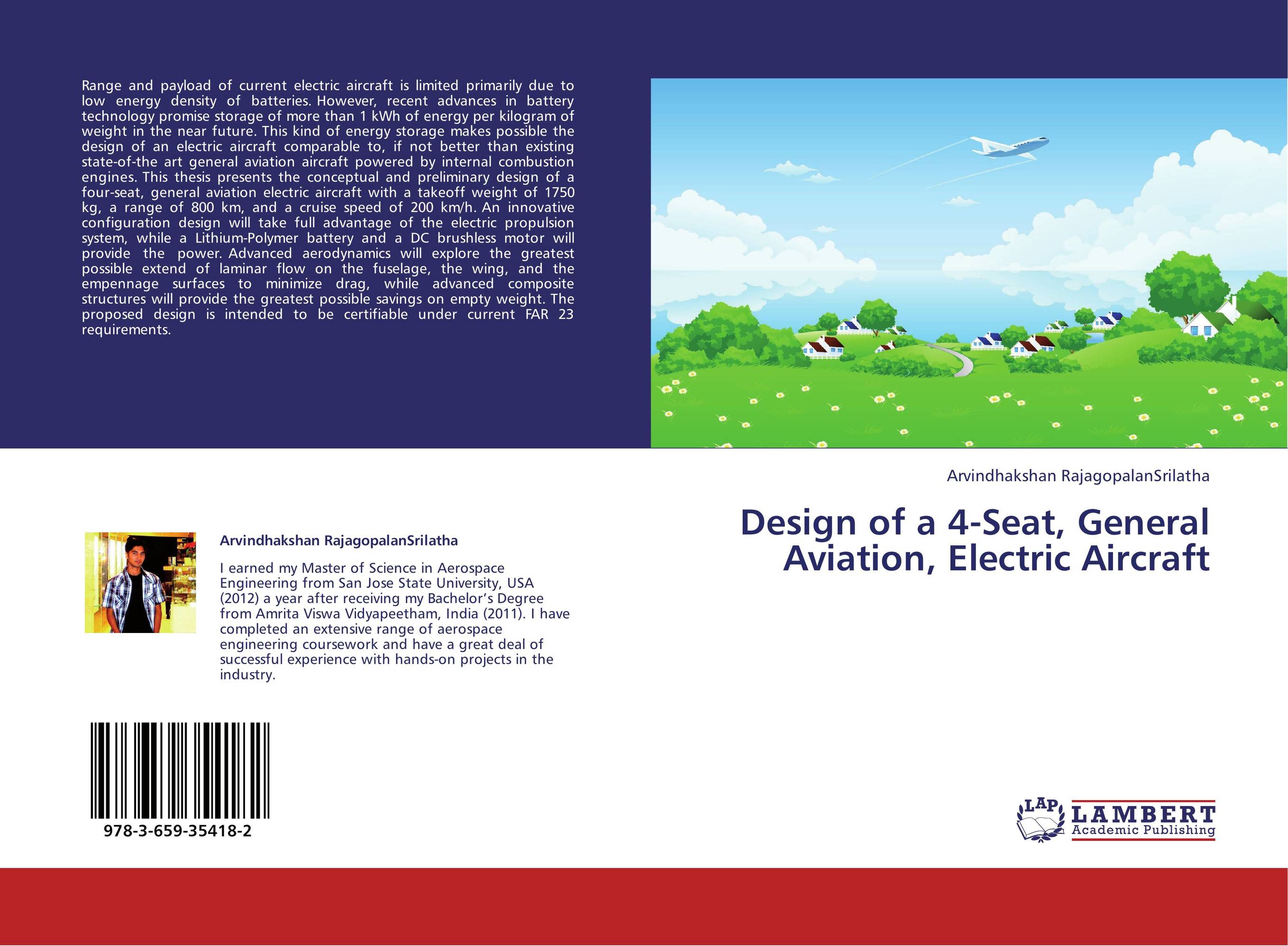| Поиск по каталогу |
|
(строгое соответствие)
|
- Профессиональная
- Научно-популярная
- Художественная
- Публицистика
- Детская
- Искусство
- Хобби, семья, дом
- Спорт
- Путеводители
- Блокноты, тетради, открытки
Design of a 4-Seat, General Aviation, Electric Aircraft.

В наличии
| Местонахождение: Алматы | Состояние экземпляра: новый |

Бумажная
версия
версия
Автор: Arvindhakshan RajagopalanSrilatha
ISBN: 9783659354182
Год издания: 2013
Формат книги: 60×90/16 (145×215 мм)
Количество страниц: 52
Издательство: LAP LAMBERT Academic Publishing
Цена: 22584 тг
Положить в корзину
| Способы доставки в город Алматы * комплектация (срок до отгрузки) не более 2 рабочих дней |
| Самовывоз из города Алматы (пункты самовывоза партнёра CDEK) |
| Курьерская доставка CDEK из города Москва |
| Доставка Почтой России из города Москва |
Аннотация: Range and payload of current electric aircraft is limited primarily due to low energy density of batteries. However, recent advances in battery technology promise storage of more than 1 kWh of energy per kilogram of weight in the near future. This kind of energy storage makes possible the design of an electric aircraft comparable to, if not better than existing state-of-the art general aviation aircraft powered by internal combustion engines. This thesis presents the conceptual and preliminary design of a four-seat, general aviation electric aircraft with a takeoff weight of 1750 kg, a range of 800 km, and a cruise speed of 200 km/h. An innovative configuration design will take full advantage of the electric propulsion system, while a Lithium-Polymer battery and a DC brushless motor will provide the power. Advanced aerodynamics will explore the greatest possible extend of laminar flow on the fuselage, the wing, and the empennage surfaces to minimize drag, while advanced composite structures will provide the greatest possible savings on empty weight. The proposed design is intended to be certifiable under current FAR 23 requirements.
Ключевые слова: batteries, energy density, laminar flow, Electric Aircraft, Lift-to-Drag Ratio, FAR 23.



